I've written about food and I've written about trains, but those were incidental rather than central to the reasons for going to China. So before I totally forget, let me say a little about what we actually did there. We visited two cities, Xi'an and Beijing. The old capital and the new capital. Both have a lot to recommend them, but Xi'an is a lot easier to deal with as a tourist, I suppose because of its smaller size.
Xi'an is home to the famous terracotta warriors, the army that was buried alongside the first emperor, Qin Shi Huang. He died about 200 BC, so they have been there a while. Apparently, his original plan was to bury the real army alongside himself, but his advisers persuaded him that it would be better to bury full size replicas instead. And replicas they are, each one an individual, with his own features and expression. I think they were known of but not located until about 30 years ago, when a local farmer discovered them while digging a well. It was some kind of anniversary when we there and so said farmer was there at the site, signing guide books. They are impressive, not least because there are so many of them. The largest hall is the size of an aircraft hanger. There are infantrymen, archers, cavalrymen, officers and a few generals, all quite distinguishable from each other. Some of them have been set up in exhibition cases so you can get very close to them. But most are left where they were originally set up, rows upon rows in neat formations. They were painted but the paint faded very soon after they were exposed to air and light. There are many still buried and so they are trying to work out a way of uncovering them and preserving the colors.
There are old parts of Xi'an that are pretty well preserved. It has an intact city wall, of varying ages, that is very impressive. It has spectacular gate towers and a road that runs along the top of it. J, D & E rented bicycles to circumnavigate it - took them about 90 minutes. Also impressive were the Drum Tower and the Bell Tower. Apparently, most old cities in China have them, though usually not on this scale. We stayed in the Xianzimen Youth Hostel, which is located near both towers. It is years since I have stayed in a Youth Hostel and I have never stayed in one as good as Xianzimen. It is located in a complex of old building and we had nicely furnished private rooms. It also has a restaurant and a bar, that appeared well liked by the locals. So it had a very nice feel to it, not least because the people that worked there were very friendly and helpful. If you are ever in Xi'an, check it out.
We went from Xi'an to Beijing on the overnight train. Soft sleepers this time so it was pretty plush. It delivered us to Beijing West Railway Station about 11 AM. There we encountered the longest and one of the slowest moving taxi lines I have encountered. The temperature was about -15 C, so we were well and truly frozen by the time we got to the front of the line. In Beijing we stayed in the Happy Dragon Hostel. Not quite up to the Xianzimen standards, but still pretty good. Elizabeth had a hard time in Beijing because the weather was really cold, apparently the coldest it has been for 30 years. I think it went down to -19 C at night and by the time we left, when it had warmed up a little, it was getting up to about -5 C. There was relatively fresh snow on the ground, although it wasn't added to while we were there. We often came across groups of workers, sometimes soldiers who were removing the snow, shoveling it into trucks or smaller bike powered containers.
I really enjoyed visiting the Great Wall. The weather was cold, but also sunny and not windy. Excellent wall- walking weather, in fact. Very beautiful, with the surrounding mountains covered with snow. We walked along it for a couple of hours, sometimes on the flat, sometimes up or down ancient and uneven stone stairs. Local people, who lived in villages outside the wall, set up little booths and tried to sell us very expensive candy bars or hot drinks. They showed great persistence, greeting each new tourist with enormous enthusiasm.
The Forbidden City seemed almost as big as the Great Wall. It just goes on for ever and ever. Interesting buildings, although most of the artifacts there are not particularly well displayed. One exception is the Clock Museum, which has a wonderful collection, mostly presents to 18th and 19th century emperors.
What else did we do in Beijing? We had to visit the Olympic site, of course. The buildings are spectacular, especially lit up at night. We went to the Peking Opera and a bunch of markets and teahouses and, of course, in addition to the fun food that I already write about, we ate some delicious Peking duck.
Sunday, February 7, 2010
Subscribe to:
Post Comments (Atom)










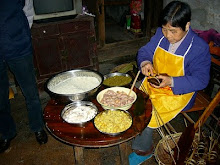









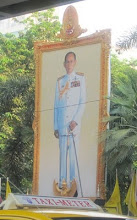




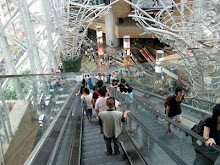








































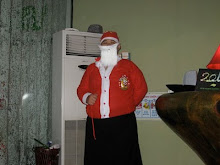




































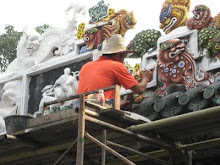




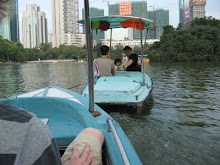






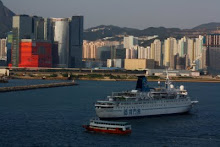

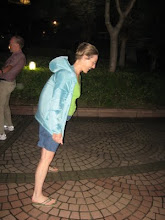







No comments:
Post a Comment